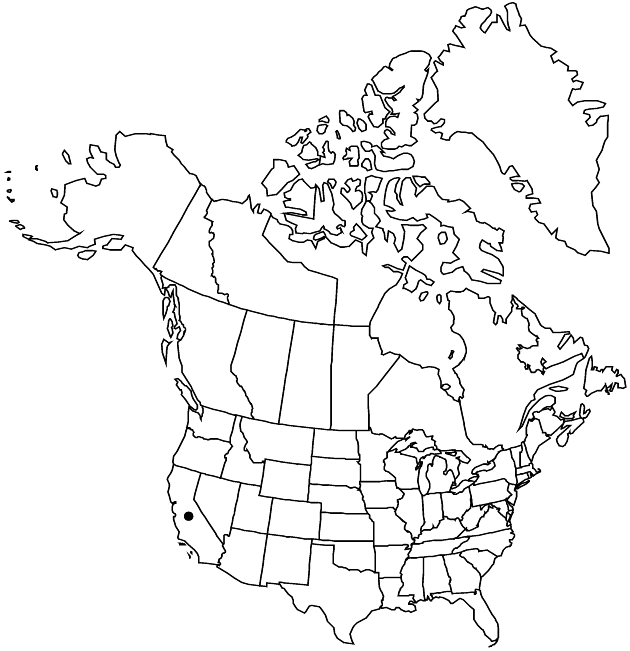Hulsea mexicana
in N. L. Britton et al., N. Amer. Fl. 34: 41. 1914.
Common names: Mexican alpinegold
Annuals or biennials, (20–) 40–100 cm. Stems 1–3, glandular. Leaves mostly cauline; blades green, oblanceolate to spatulate, 5–14 cm, margins dentate, faces glandular-villous; distal cauline leaves broadly oblanceolate to ovate, gradually reduced. Heads 3–5. Involucres hemispheric, 15–27 mm diam. Phyllaries 8–12 mm, outer narrowly lanceolate, apices acuminate. Ray-florets 20–35; corolla-tubes glabrous; laminae yellow (narrowly elliptic to narrowly oblong-lanceolate), 10–12 mm. Disc corollas yellow. Cypselae 4–6 mm; pappus-scales subequal, 1–2 mm. 2n = 38.
Phenology: Flowering late spring–summer.
Habitat: Common after fires, chaparral and woodlands
Elevation: 1000–1100 m
Distribution

Calif., Mexico (Baja California)
Discussion
In the flora area, Hulsea mexicana grows in southern San Diego County.
Selected References
None.
Lower Taxa
None.
... more about "Hulsea mexicana"
introrse +
connate +
herbaceous +
acuminate +
scarious +
absent +
hirsute +
papillate +
corymbiform +
continuous +
decurrent +
green +
oblanceolate;spatulate +
winged;ribbed;winged;ribbed +
1;15 +
stigmatic +
6;80 +
absent +
Mexican alpinegold +
glabrous +
zygomorphic +
monomorphic +
dimorphic +
silky-hairy +
4mm;6mm +
staminate +
reduced +
straight +
glandular-villous +
scabrellous +
distinct +
proximal +
1;5 +
bisexual +
dispersed +
singly +
discoid +
indeterminate +
3;5 +
surrounding +
hemispheric +
yellow +
cauline +
dentate +
lanceolate +
2-carpellate +
inferior +
attached +
anatropous +
subequal +
persistent +
fragile +
falling +
equal +
tough +
thick +
absent +
connate +
persistent +
distinct +
falling +
unequal +
in N. L. Britton et al., N. Amer. Fl. +
1914 +
pistillate +
absent +
fertile +
epaleate +
pitted +
knobby +
fibrous +
distinct +
laciniate +
exalbuminous +
modifed +
2;4 +
alternate +
erect +
2-branched +
papillate +
Hulsea mexicana +
Hulsea +
species +
cylindric +
equaling +
shorter +
longer +